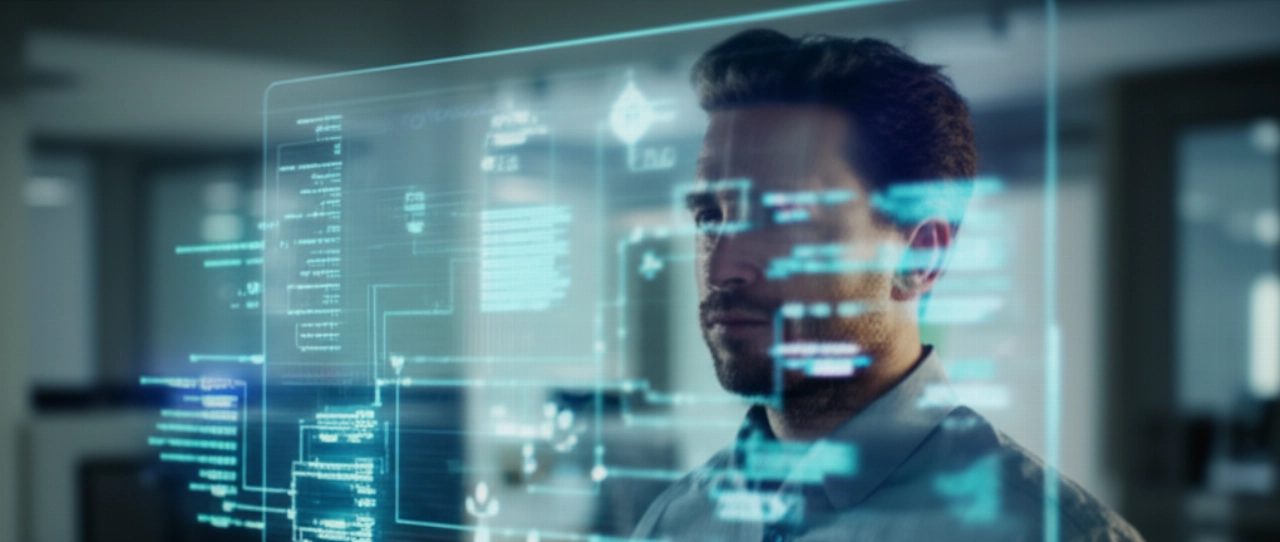In the high-stakes world of enterprise e-commerce, the word "cost" often triggers an immediate, visceral reaction. Especially when discussing a paradigm shift as significant as headless commerce. Many CTOs and E-commerce VPs initially view headless commerce cost as a prohibitive barrier, a premium price tag for an unproven technology. But what if that initial perception is fundamentally flawed? What if focusing solely on the upfront expenditure blinds you to the far greater, often hidden, costs of inaction or, worse, investing in a platform that stifles your growth?
At Commerce-K.com, we understand that you're not just buying a technology stack; you're investing in the future of your business. You're seeking a solution that transcends the scalability ceiling of your current platform, eliminates the nightmare of integration hell, and liberates you from the "one-size-fits-all" trap of restrictive SaaS solutions. This isn't about a price tag; it's about quantifying the ROI of unparalleled agility, reduced Total Cost of Ownership (TCO), and a commerce architecture that scales with your ambition, not against it.
This article will reframe the discussion around headless commerce, moving beyond the simplistic "build cost" to a strategic analysis of its true value. We'll equip you with the insights to understand not just what headless commerce costs, but what it saves and what it enables for your enterprise.

The Hidden Costs of Monolithic Systems: Why 'Cheaper' Often Means More Expensive
Many enterprises cling to their legacy monolithic platforms or basic SaaS solutions, believing they are saving money. Yet, beneath the surface of seemingly lower licensing fees or initial setup costs, a torrent of hidden expenses erodes profitability and stifles innovation. This is where the true total cost of ownership (TCO) reveals itself, often dwarfing any perceived upfront savings.
- The Scalability Ceiling: Your current platform buckles under traffic spikes, complex product catalogs, or expanding B2B workflows. Each lost conversion, each delayed transaction, is a direct hit to revenue. The cost? Missed opportunities and a shrinking market share.
- Integration Hell: Disconnected ERP, PIM, CRM, and WMS systems force manual data entry, create data silos, and lead to operational inefficiencies. The cost? Sky-high labor expenses, data inaccuracies, and a glacial pace for new initiatives.
- The "One-Size-Fits-All" Trap: Standard SaaS platforms offer limited customization, forcing you to adapt your unique business processes to their rigid framework. This means compromising on complex pricing models, bespoke product configurators, or specialized B2B workflows. The cost? A diluted competitive advantage and frustrated customers.
- Performance Bottleneck: A slow site kills conversions. Every second of load time impacts your bottom line, especially during peak sales periods. The cost? Direct revenue loss and a damaged brand reputation.
- Innovation Stagnation: Adding new features or experimenting with emerging technologies (like AI-driven personalization or AR/VR commerce) becomes a Herculean task on a monolithic stack. The cost? Falling behind agile competitors.
These aren't just inconveniences; they are quantifiable drains on your resources. Understanding the headless commerce cost begins with recognizing the exorbitant price you're already paying for technical debt and operational inefficiency.

Deconstructing the Headless Commerce Cost: Key Investment Areas and ROI Drivers
To truly understand the headless commerce cost, we must break it down into its core components, each representing a strategic investment with clear ROI potential. This isn't a single line item; it's a strategic allocation of resources designed to build a robust, future-proof digital commerce engine.
- Frontend Development (The Experience Layer): This is where your brand comes alive. Investment here covers custom user interfaces, progressive web apps (PWAs), mobile-first design, and conversion rate optimization (CRO) strategies.
- ROI Driver: Superior user experience leads to higher conversion rates, increased average order value, and stronger customer loyalty. Faster load times directly impact SEO rankings and reduce bounce rates.
- Backend Commerce Engine (The Business Logic): This is your chosen commerce platform (e.g., Magento Open Source, Shopify Plus, Commercetools) decoupled from the frontend. It handles core commerce functionalities like product catalog, cart, checkout, and order management.
- ROI Driver: Choosing the right robust, API-first platform ensures scalability and flexibility, reducing the need for costly replatforming cycles in the future.
- Integration Layer (The Connective Tissue): This is arguably the most critical and often underestimated component. It involves connecting your headless commerce engine to your existing enterprise systems: ERP, PIM, CRM, WMS, payment gateways, and marketing automation tools. This is where the power of composable commerce and MACH architecture truly shines, leveraging microservices and robust API-first strategies.
- ROI Driver: Eliminates manual processes, ensures data consistency, and provides a single source of truth across your organization. This dramatically reduces operational costs and improves decision-making.
- Infrastructure & Hosting: Cloud-based solutions (AWS, Azure, Google Cloud) offer scalability and reliability. Costs include servers, databases, CDN, and security measures.
- ROI Driver: Elastic scalability means you only pay for what you use, avoiding over-provisioning or performance bottlenecks during peak times. Enhanced security protects your data and reputation.
- Ongoing Maintenance & Optimization: This includes regular updates, security patches, performance monitoring, and continuous improvement based on analytics and user feedback.
- ROI Driver: Proactive maintenance prevents costly downtime and security breaches. Continuous optimization ensures your platform evolves with market demands, maximizing long-term ROI and reducing the need for complete overhauls.
- Talent & Expertise: Whether in-house or outsourced, skilled developers, architects, and project managers are essential.
- ROI Driver: Partnering with experienced specialists like Commerce-K ensures the project is executed efficiently, on time, and within budget, mitigating the fear of a failed migration and delivering a high-quality solution from day one.
When evaluating headless commerce cost, consider these areas not as expenditures, but as strategic investments that directly contribute to your competitive advantage and long-term profitability.

Beyond the Build: How Headless Commerce Becomes Your Engine for Competitive Advantage
The true value of headless commerce extends far beyond the initial implementation. It transforms your digital presence from a static storefront into a dynamic, agile engine for business growth. This is where the investment in headless commerce cost truly pays dividends, allowing you to build a competitive moat that your rivals cannot easily replicate.
- Unprecedented Agility: Decoupling the frontend from the backend means you can rapidly deploy new features, test marketing campaigns, and adapt to market changes without disrupting core operations. This speed to market is invaluable in today's fast-paced digital landscape.
- Omnichannel Excellence: Deliver consistent, personalized experiences across any touchpoint – web, mobile app, IoT devices, in-store kiosks, voice assistants. Your commerce capabilities are no longer confined to a single website.
- Enhanced Personalization & CRO: With a flexible frontend, you can implement sophisticated personalization engines, A/B test variations, and optimize conversion funnels with unparalleled precision. This directly translates to higher revenue per visitor.
- Future-Proofing Your Investment: By embracing MACH architecture (Microservices, API-first, Cloud-native, Headless), you build a composable system that can easily integrate new technologies as they emerge. This means you stop replatforming every 3-5 years, drastically reducing your long-term TCO and mitigating the fear of a failed migration. Your platform evolves with your business, not against it.
This strategic advantage is the ultimate return on your headless commerce cost investment.
Case Study: From Legacy Burden to Agile Powerhouse – A B2B Manufacturer's Headless Transformation
A leading B2B manufacturer, with annual online sales exceeding €75 million, faced the classic enterprise dilemma: their aging monolithic platform was a constant source of frustration. Integrations were brittle, performance lagged, and deploying new features took months, stifling their ability to respond to market demands. Their headless commerce cost analysis initially seemed daunting, but the alternative was stagnation.
Commerce-K partnered with them to architect and implement a comprehensive headless solution. We leveraged a robust backend commerce platform, integrated seamlessly with their existing SAP ERP, Salesforce CRM, and a custom PIM system via a sophisticated API-first layer. A custom PWA frontend was developed, focusing on intuitive B2B workflows and a lightning-fast user experience.
The Results:
- 35% Reduction in TCO: Achieved through streamlined operations, reduced manual data entry, and significantly lower maintenance costs compared to their previous system.
- 22% Increase in Conversion Rate: Attributed to the vastly improved site performance, intuitive user experience, and enhanced personalization capabilities.
- Feature Deployment Time Reduced by 70%: New product configurators and custom pricing rules could be rolled out in weeks, not months.
- Zero Downtime During Migration: Our meticulous planning and execution ensured a seamless transition, completely alleviating the fear of a failed migration.
This case demonstrates that the headless commerce cost, when viewed as a strategic investment, delivers tangible, measurable returns that far outweigh the initial outlay.
The Commerce-K Difference: Strategic Partnership, Not Just a Project Quote
Many agencies will give you a number for headless commerce cost. At Commerce-K, we provide a strategic roadmap. We don't just build; we engineer. We don't just quote; we consult. Our approach is rooted in understanding your unique business challenges, your long-term vision, and the specific pain points that are holding you back.
We believe that true partnership means de-risking your investment. It means transparently outlining the components of your headless commerce cost, demonstrating the clear ROI for each, and building a solution that not only meets your immediate needs but also future-proofs your enterprise for decades to come. We bring the expertise in composable commerce, MACH architecture, and complex enterprise integrations that transforms potential pitfalls into strategic advantages.
Our commitment is to deliver a commerce engine that provides unparalleled scalability, seamless integration, and a competitive edge, ensuring your investment in headless commerce yields maximum returns.
Frequently Asked Questions about Headless Commerce Cost
Is headless commerce always more expensive than a monolithic platform?
While the initial build cost for headless commerce can sometimes be higher due to custom frontend development and integration complexity, it often leads to a significantly lower Total Cost of Ownership (TCO) in the long run. This is because headless offers greater flexibility, faster feature deployment, reduced maintenance for a composable stack, and avoids costly replatforming cycles every few years. It's an investment in agility and future-proofing, not just a one-time expense.
How does headless commerce impact our existing ERP/PIM/CRM integrations?
Headless commerce, by its very nature of being API-first, is designed for seamless integration. Instead of being a challenge, it's an opportunity to create a more robust, efficient, and centralized data flow. We build custom integration layers that connect your headless commerce engine directly to your ERP, PIM, CRM, and WMS systems, eliminating manual processes and ensuring data consistency across your entire enterprise. This addresses the common pain point of "integration hell" head-on.
What's the typical timeline for a headless commerce implementation?
The timeline for a headless commerce implementation varies significantly based on complexity, the number of integrations, and custom feature requirements. A foundational headless setup might take 4-6 months, while a highly customized enterprise solution with numerous integrations could range from 8-18 months. Our strategic scoping process provides a detailed, realistic timeline, ensuring transparency and mitigating the "fear of a failed migration" by setting clear expectations from the outset.
How do we measure the ROI of a headless commerce investment?
Measuring ROI for headless commerce involves tracking key performance indicators (KPIs) such as conversion rate optimization (CRO), average order value (AOV), site performance (load times), operational efficiency gains (reduced manual work), faster time-to-market for new features, and reduced long-term TCO. We work with you to define these metrics upfront, ensuring a clear path to quantifying the value of your investment.
Will a headless migration negatively affect our SEO?
A poorly executed migration, regardless of the platform, can indeed harm SEO. However, with a strategic and experienced partner, a headless migration can significantly improve SEO. Headless allows for superior site performance (speed is a major ranking factor), greater control over content delivery, and the ability to implement advanced SEO strategies that are often difficult on monolithic platforms. Our process includes meticulous SEO planning to ensure continuity and enhancement of your search rankings.
The Future of Your Commerce is Not a Cost, But an Investment
You've navigated the complexities of headless commerce cost, moving beyond the initial price tag to understand the profound strategic advantages it offers. You've seen how it addresses the scalability ceiling, resolves integration hell, and liberates you from the "one-size-fits-all" trap. This isn't an expenditure; it's an investment in agility, performance, and a future-proof commerce engine that will drive your market share and profitability for years to come.
Perhaps you're thinking, "This sounds like a significant undertaking," or "Do we have the internal resources for such a transformation?" These are valid concerns, but they are precisely why a strategic partner is indispensable. The true cost isn't in building a future-proof platform; it's in delaying the inevitable, allowing technical debt to compound, and watching competitors outpace you with superior digital experiences.
Stop navigating technical debt and missed opportunities. Your business deserves a clear digital commerce roadmap that delivers measurable results. The first step isn't a quote; it's a no-obligation Scoping & Strategy Session with our senior architects. We'll help you map your potential, de-risk your investment, and uncover the opportunities you're currently missing. Click here, tell us about your project, and discover how Commerce-K can transform your digital commerce. Start building your future-proof commerce engine today.
Now that you understand the strategic investment of headless commerce, discover how we execute a seamless ecommerce migration service or explore the benefits of custom ecommerce development for your unique business needs.





